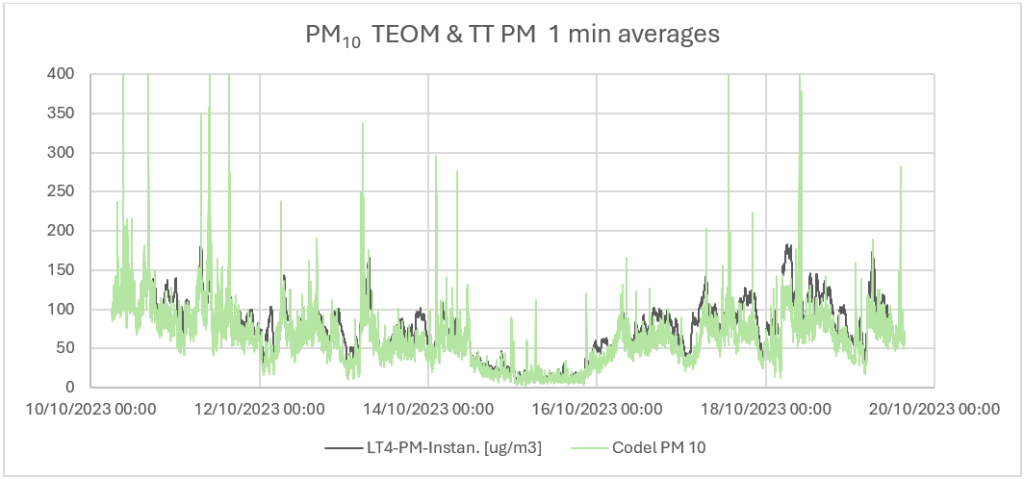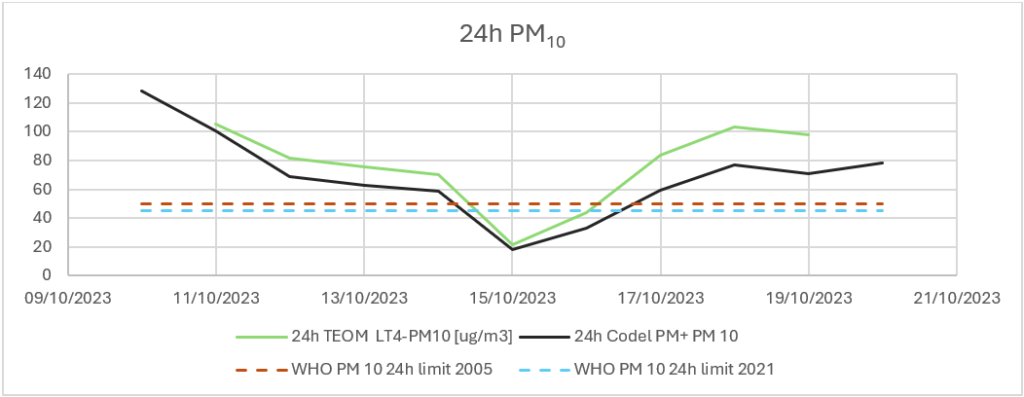
Policy and Mitigation Recommendations
To address PM pollution in tunnels, a multi-layered approach is needed:
- Mandate PM1.0, PM2.5, and PM10 monitoring in tunnels.
- Enforce exposure limits for both occupational and public settings.
- Upgrade ventilation systems with high-efficiency particulate air (HEPA) filters.
- Promote low-emission zones within or around tunnel access points.
- Encourage mode shifts to electric vehicles and active transportation.
- Integrate tunnel air quality data into public health monitoring systems.
Case Study Highlights
WHO Recommended PM 2.5 over 24Hrs
15ug/m3
Max Measured PM2.5 over 24Hrs
58ug/m3
(CODEL)
52ug/m3
(TEOM)
24-hour averages of PM2.5 indicate that the WHO 24-hour exposure limits for PM2.5 are frequently exceeded in this tunnel. The periods where exposure limits are not exceeded are during the weekends when truck traffic in the tunnel is significantly reduced.
WHO Recommended PM 10 over 24Hrs
45ug/m3
Max Measured PM2.5 over 24Hrs
103ug/m3
(CODEL)
130ug/m3
(TEOM)
24-hour averages of PM10 indicate that the WHO 24-hour exposure limits for PM10 are frequently exceeded in this tunnel. The periods where exposure limits are not exceeded are during the weekends when truck traffic in the tunnel is significantly reduced.
CODEL Case Study
Location: French Alps Road Tunnel
Install Date: 21st September 2023
Tunnel Length: 12.87km
Monitoring Duration: 5 Weeks
Reference Monitor: Tapered Element Oscillating Microbalance (TEOM)
The test was conducted from September 21 to October 19, 2023. During this period, the TEOM analyser was calibrated three times – on September 26, October 3, and October 10. It measured PM2.5 from September 21 to October 10, then switched to PM10 sampling. The CODEL TT PM device was not calibrated or maintained during the trial.
PM 2.5 Results
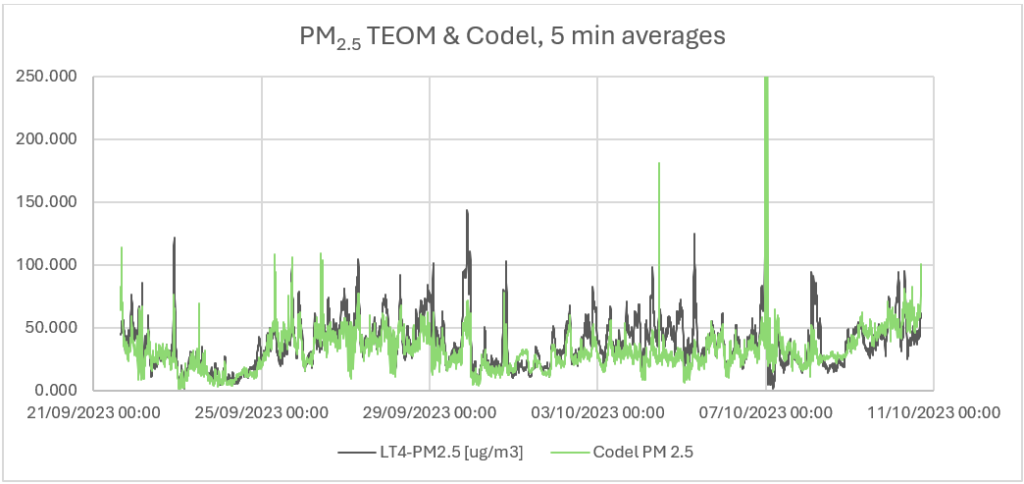
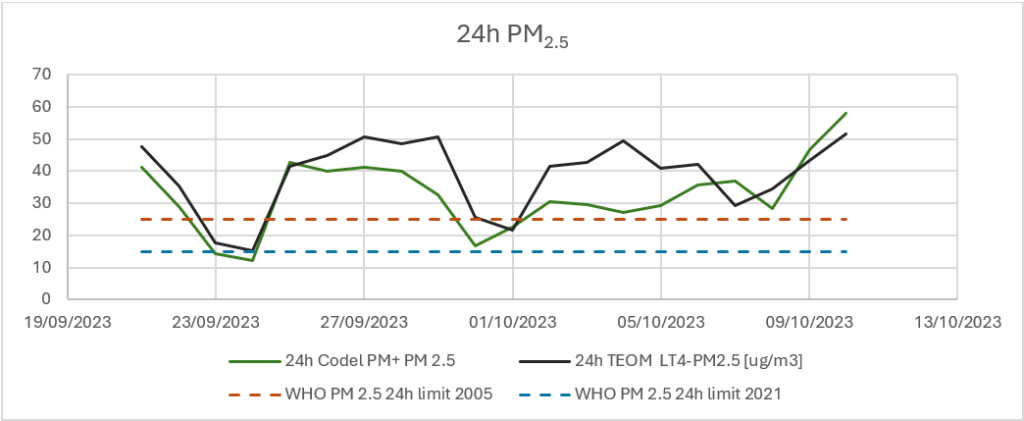
PM10 Results
